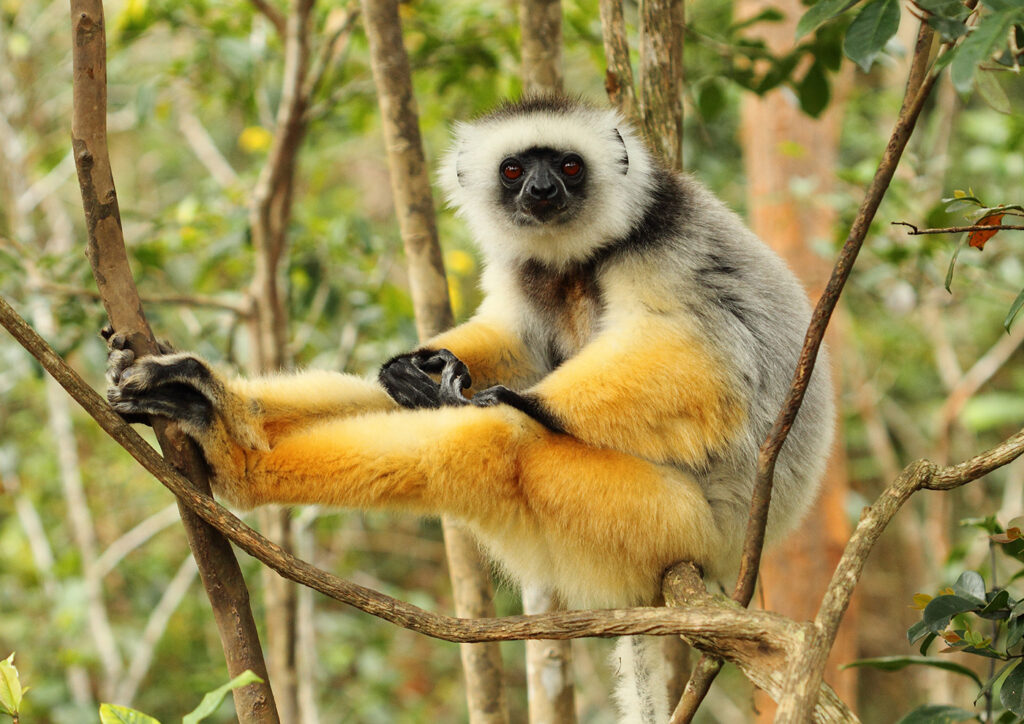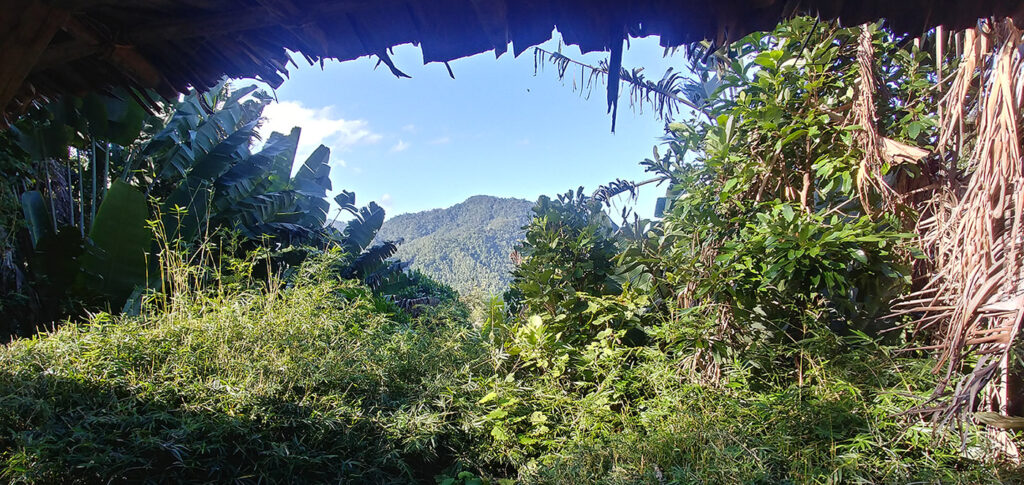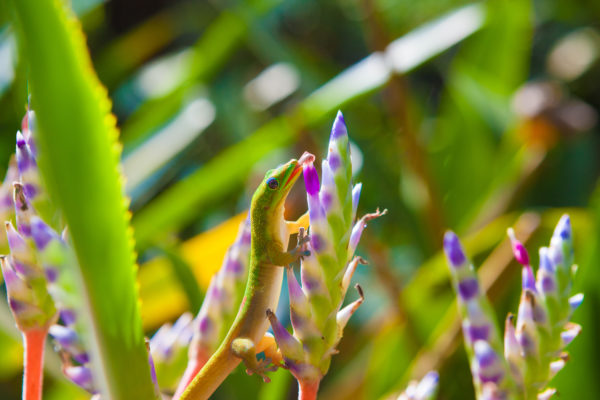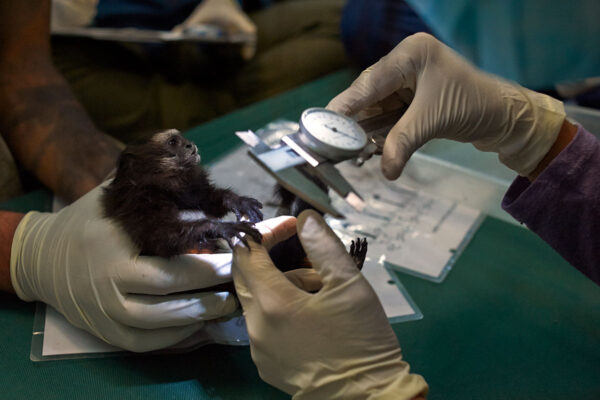In one Madagascar forest, the trees teem with lemurs. In another forest just 150 miles away, the last few individuals of a small local population may soon be lost.
To figure out how to best support these two endangered species — black-and-white ruffed lemurs and diademed sifakas — scientists at Washington University in St. Louis are joining up with researchers at the Saint Louis Zoo, Missouri Botanical Garden and Madagascar-based partners for an innovative research effort under the Living Earth Collaborative. Through the Eric P. & Evelyn E. Newman Foundation, Washington University Board of Trustees Chair Andy Newman established the Newman Madagascar Research Fund, which will be critical to the project’s success.

The work has begun with intensive field observations focused on the daily activities, living requirements and genetic diversity of lemurs in the Betampona Natural Reserve, near the island country’s northeast shoreline. Next up is a similar inventory at the Vohibe Forest, in eastern Madagascar.
“No two sites are the same,” said Emily Wroblewski, who leads the project along with colleague Krista Milich, both assistant professors of anthropology in Arts & Sciences at Washington University. “And when you’re dealing with an endangered species, every individual and every site counts.”

For the black-and-white ruffed lemur, Varecia variegata, the key number to count is 45. That’s how few individual lemurs of this species might remain at the more isolated forest site, Betampona. The diademed sifaka, Propithecus diadema, could be down to only 19 individuals in this location, based on recent estimates.
“In Betampona, we’re trying to get a really good grasp of the numbers,” said Elizabeth Kelley, executive director of the Saint Louis Zoo Wildcare Institute. “We need to find out if the population is really as small as we think it is, and to really comb through and do the quantitative census work to get a good population estimate.”
The Madagascar Fauna and Flora Group, a nongovernmental organization formed by a consortium of zoos and other institutions, including the Saint Louis Zoo and the Missouri Botanical Garden, identified Betampona as a priority location more than 30 years ago.
“Having a Madagascar-based team is essential to the project.”
Fidy Rasambainarivo
“Having a Madagascar-based team is essential to the project,” said Fidy Rasambainarivo, affiliate scientist with the Saint Louis Zoo Wildcare Institute and its Center for Conservation in Madagascar. The local focus was important even before the COVID-19 pandemic closed borders and made travel more difficult. Now, with input and a project plan set up by the Living Earth Collaborative researchers, members of Rasambainarivo’s team already are following the lemurs in the field: making behavioral notes, mapping ranges and collecting samples.
Lemurs are endemic to Madagascar, and they are particularly vulnerable to the effects of forest loss. At least 26 of the lemur species in Madagascar are listed as critically endangered or endangered.
“We’ve chosen to focus on two species that have the most extreme conservation status,” said Milich. “They are particularly struggling at the more isolated site [Betampona].”
Milich and Wroblewski noted that the new project in Madagascar has strong ties to the historical work of the late Robert Sussman, a leading scholar of human and primate behavior at Washington University who helped train many of today’s foremost primatologists. A world authority on the behavior and ecology of lemurs from Madagascar, Sussman was Kelley’s adviser during her graduate training.

Life under different circumstances
The Betampona Natural Reserve comprises about 7.7 square miles of trees, surrounded by fields that have been cleared for agriculture.
The second site included in this study is the Vohibe Forest. It is larger (about 12 square miles) and much better connected to an adjacent forest corridor called the Ankeniheny-Zahamena forest corridor.

Lemurs that live in the Vohibe Forest enjoy a bigger, healthier forest to roam as well as more natural opportunities to encounter potential mates from different lemur groups that travel along the forest corridor. That’s a big part of why the scientists want to compare lemurs at Vohibe with those at Betampona.
“We’re trying to understand genetic diversity targets and what is viable and what is optimal by looking at a population in the best circumstances we can find right now in the wild,” Wroblewski said.
The researchers plan to document which plants the lemurs regularly eat and use at the Vohibe Forest, where the Missouri Botanical Garden has worked to restore forest patches that were previously disturbed or destroyed.
“Since 2005, the Missouri Botanical Garden has been working with people in the Ambalabe commune to conserve the Vohibe Forest’s biodiversity,” said Armand Randrianasolo, Madagascar program curator for the Missouri Botanical Garden. “As the leader of the team tasked to carry out activities to primarily safeguard plant diversity at this site, I have been looking for partners to increase scientific knowledge about all animals occurring at the Vohibe site.
“To reach our conservation goal for Vohibe Forest’s biodiversity, collaboration with people studying lemurs is important,” he added. “Lemurs are a vital part of the Vohibe Forest ecosystem.”
First steps on the ground
Over the next two years, the project will provide training for four Malagasy graduate students and four Malagasy guides, as well as fund the effort of a Washington University–based postdoctoral scholar who has performed significant fieldwork in Madagascar, Giovanna Bonadonna.

Bonadonna started work in January 2021, organizing future field work and research permits from St. Louis. A specialist in behavioral and spatial ecology, Bonadonna has worked on another long-term study of lemur species in central-eastern Madagascar.
“That experience gives me a good perspective on the challenges that they face,” Bonadonna said.
“Both of them are very charismatic species,” she added. “Propithecus [the diademed sifaka] and Varecia [the black-and-white ruffed lemur] can make very interesting vocalizations. You definitely notice them in the forest.”
“I’m really excited about this project,” Rasambainarivo said. “Animals need genetic diversity to adapt to changes in the environment — from climate change to the immediate threat of habitat destruction. And what Emily and Krista are doing to understand these two species and how they work in multiple places is going to be very helpful for the management of these species and their conservation in the longer term.”

A new kind of flagship effort
Since 2018, the Living Earth Collaborative has funded 23 projects involving 62 investigators from nine local St. Louis institutions. Mostly, these efforts have been smaller infusions of seed funding (generally $10,000 to $40,000) aimed at helping St. Louis-based researchers make connections and launch new projects (see funded projects here, here and here).
But in Madagascar, project partners at the Saint Louis Zoo and the Missouri Botanical Garden have already made significant commitments to biodiversity and conservation.
The new lemur project will build on more than 30 years of St. Louis-led research and involvement in the country, motivated by understanding and preserving Madagascar’s unique and globally important biodiversity.
That experience sets this project apart as a new kind of flagship effort for the Living Earth Collaborative, according to Jonathan Losos, director of the Living Earth Collaborative and the William H. Danforth Distinguished University Professor in the Department of Biology in Arts & Sciences at Washington University.

The Madagascar collaboration aims to help bridge research conducted at separately managed forest sites and to promote common conservation goals. This is good news for black-and-white ruffed lemurs and diademed sifakas — and potentially for other lemur species, too.
“The two species were prioritized because of their [endangered species] status. But these aren’t animals living in isolation,” Wroblewski said. “Our long-term goal is to take a whole-ecosystem perspective toward conservation and understanding how the lemurs are interacting with each other as well as their environment as a whole.”

